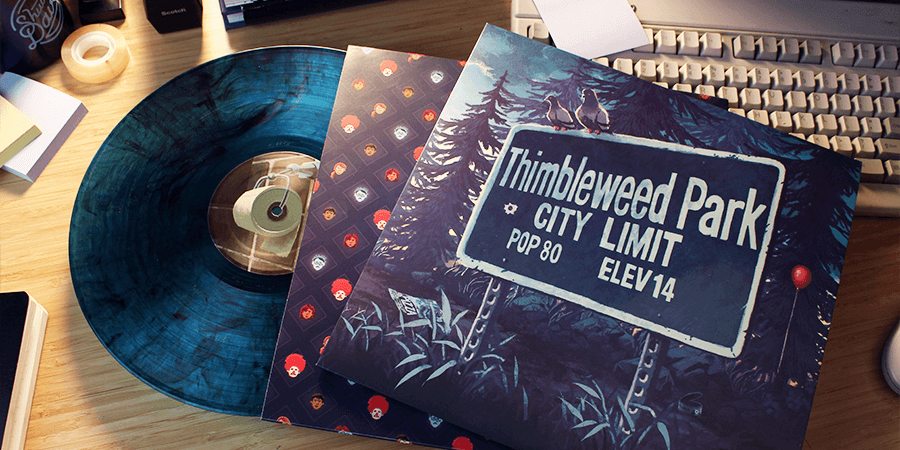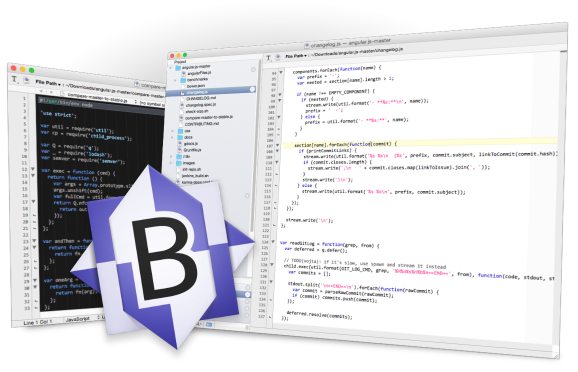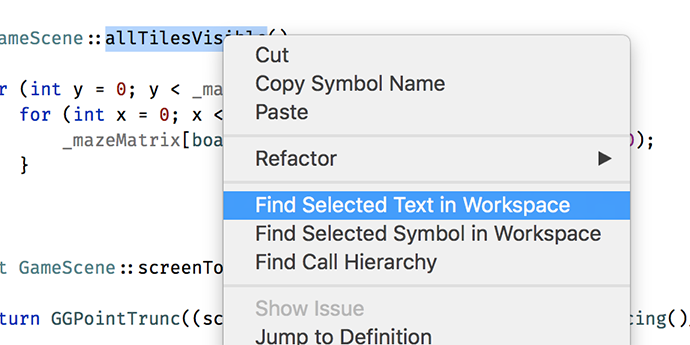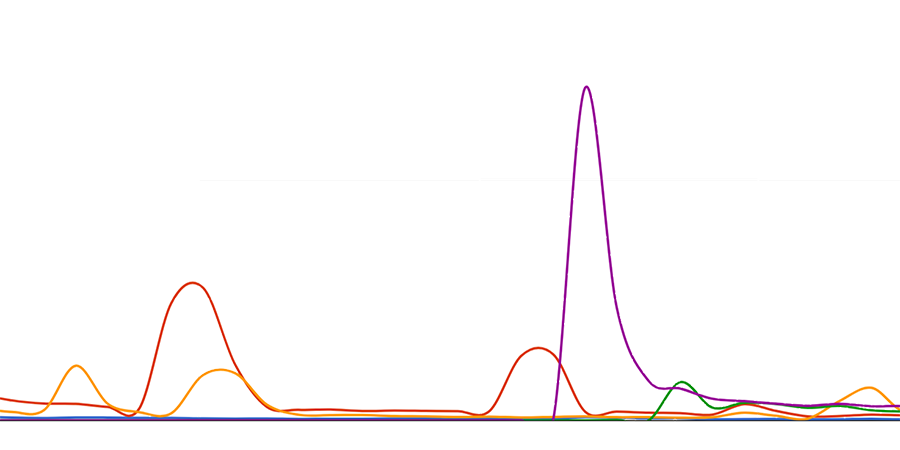



If your parent’s old turntable is gathering dust in the basement, oh boy do I have an awesome use for it!
Also worth noting that vinyl will likely still be playable after the apocalypse. MP3s. Not so much. Think of it as an investment in bartering for food in the future.

What other Ron Gilberts around the world are doing.

I’m a big fan of BBEdit, as a Mac user, it’s my text editor of choice for all but Xcode/C++ programming.
David, Jenn, and I used BBEdit on Thimbleweed Park. I even created a custom syntax coloring scheme for our proprietary language and David added some great keyword based auto expansions.
It’s feature rich and has everything a coder could want. Except for one thing and it drives me crazy to the point that each time I need to do it, it puts a stain on what is by all other accounts, a perfect editing experience.
In Xcode, I can select a word (or words), right click on it and the pop-up menu shows this.

It’s my bread-and-butter for searching.
I can’t do this in BBEdit. The closest I can come is selecting the word, then hitting ⌘-E to Use Selected Text In Find, then ⌘-G to bring up the Search In Project window and click on Find.
This is cumbersome as it requires me to move my hands to the keyboard. (yes, I know super programmers only use the keyboard, but clearly, not all of us do).
If I could get BBEdit to add just one thing, it would be this. Then it would be perfect.
During Thimbleweed Park I wasted several afternoons trying to hack this in with macros, etc.
P.S. To head off the griping/astonishment I get whenever I post a screenshot of my text editor… yes, I enjoy programming with a light/white background. But only for C++. For other languages (in BBEdit), I use a dark/black background. As I am switching between the two all day long, I find my brain needs to strong visual distinction to differentiate the two.
There are three groups of people I really hate: Grammar Nazis, Password Nazis, and actual Nazis.
If your website is full of assholes, it’s your fault
“Our communities are defined by the worst things that we permit to happen. What we allow tells the world who we are.”

I took a statistics class in college, but I didn’t pay much attention due to never seeing a need for the knowledge. Much of my education is like this: “Why the hell would I ever need this”, only to find out years later that I desperately needed it (yeah, I’m talking to you, high school algebra).
Thimbleweed Park is out on seven different digital stores and each of them has a completely different way of reporting sales. It’s time-consuming and frustrating to download each sales report once a month and hand massage the data into a useable format.
I spent the last few days writing a python script to take all the data and move it into a single SQL database so I could quickly query tons of useful information.
@@pre@@ SELECT countries.country, SUM(sales.units_sold) AS units_sold FROM sales JOIN countries ON sales.country_code = countries.country_code WHERE units_sold > 0 GROUP BY sales.country_code ORDER BY units_sold DESC @@pre@@
One thing I want to know is an “average” units/day for each store, so I can keep an eye on long-term trends. Sounds easy, except for sales and promotions happening all-to-often, and they produce huge spikes in the data that I don’t care about. I just want to see an average for average non-sale days and I don’t want to go in and remove the sale ranges as sometimes they happen without my knowledge.
I’m looking for a way to take an average that removes spikes that are well above the average. This doesn’t have to be in SQL, that computation will most likely happen in a spreadsheet, or could happen in the report generation if it’s too complex.
Maybe this isn’t possible, but I figured I’d ask.

Here is a breakdown of Thimbleweed Park sales by store for 2017. This is based on dollars, not units, so mobile numbers will be smaller due to price. You can see how strong Switch is given it only had a few months of sales.
The iOS and Mac App Store numbers are combined due to Apple lumping them together for payments. 75% of the money from Apple comes from iOS.
Typically, GOG sales are 5%-10% of Steam sales, but we’re doing much better than that.
Android sales are lower than expected, but not by much. Paid Android apps have always been a struggle.
The thin green slice at the top is the Humble store.
The biggest disappointment is PS4 sales. We could never get them to feature us, so we’ve haven’t been on the dashboard. PS4 and Switch came out close to the same time, so I figure Switch sales have cannibalized PS4 to some extent, but it doesn’t fully explain it. Given the large installed base of PS4, it’s a tad confusing. The argument that players don’t want to play point-and-click on a console doesn’t hold water given how well we did on Xbox.
For indie devs that don’t have money to advertise, you’re at the mercy of the platforms, and this goes for Steam, GOG and the others. 90% of your attention comes from being on the front page or dashboard, and if you can’t get them to feature you (or aren’t naturally in the top lists), you have a problem.
All-in-all, I can’t complain. Thimbleweed Park has done well. Nobody is getting rich, and it’s not enough to turn around and make another point-and-click adventure without substantial risk, but by the end of 2017 I had made just enough to just dig myself out of the financial hole the game put me in.
The best way to train a neural network is with a combination of reward and punishment.